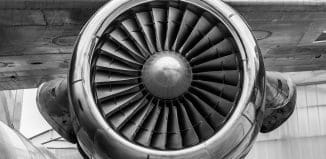Pilots May Need to Look for A New Job
This post is also available in:  עברית (Hebrew)
עברית (Hebrew)
A Pentagon effort to develop businesses in Silicon Valley may be bearing some of its first fruit, as a San Diego company rolls out a set of new drones it says could accompany human-piloted fighters into combat.
Kratos Defense and Security Solutions has officially announced two new classes of drones designed to function as robotic wingmen for fighter pilots. The development of the recently finished UTAP-22 Mako has been funded by the Defense Department’s Silicon Valley laboratory, dubbed DIUx. Separately, the company showed off a larger, 9-meter drone backed by the Air Force called the XQ-222 Valkyrie, with a range of more than 6,000 nautical kilometers.
Aviation experts told the Washington Post that the speed and altitude capacities published by Kratos suggest the drones could fly in tandem with an F-16 or F-35 fighter. The company says it has already successfully flown the drones alongside manned aircraft and that it will soon embark on an advanced round of testing employing a more sophisticated array of sensing technology to determine just how autonomous the drones can be. In these tests, a pilot in an accompanying airplane is preparing to monitor the drones from a small Android tablet. For most of the flight, the drone will attempt to maneuver without the help of a human, relying on artificial intelligence and sensors to mimic the nearby plane’s movements.
“In order to exploit the maneuverability of one of these aircrafts, you’ll need to have the sensing ability of when to exploit it,” said Dave Deptula, a retired Air Force general who now serves as dean of the Mitchell Institute for Aerospace Studies. This effort comes as the military explores what role robotics might play in the wars of the future.
The use of robotic systems to augment manned aircraft could theoretically make air combat safer if, for example, autonomous aircrafts can be sent ahead to absorb an enemy’s attacks first. The aircrafts are also less expensive to deploy than manned aircrafts; the reusable drones cost between $2 million and $3 million.
“These systems can conduct fully autonomous missions,” said Steven Fenley, president of the company’s unmanned systems division. Former defense secretary, Ashton B. Carter, helped launch the Silicon Valley outpost in 2015, tasking the Defense Innovation Unit Experimental with funding innovative technologies outside greater Washington. The effort had its early stumbles: Carter reshuffled its leadership team and members of Congress took steps to limited the agency’s funding, saying it lacked direction.
“This is an example of where DIUx went out and found innovative ideas and are funding them, and it’s an excellent way to reinforce companies that are not already fully established,” said Deptula.





























